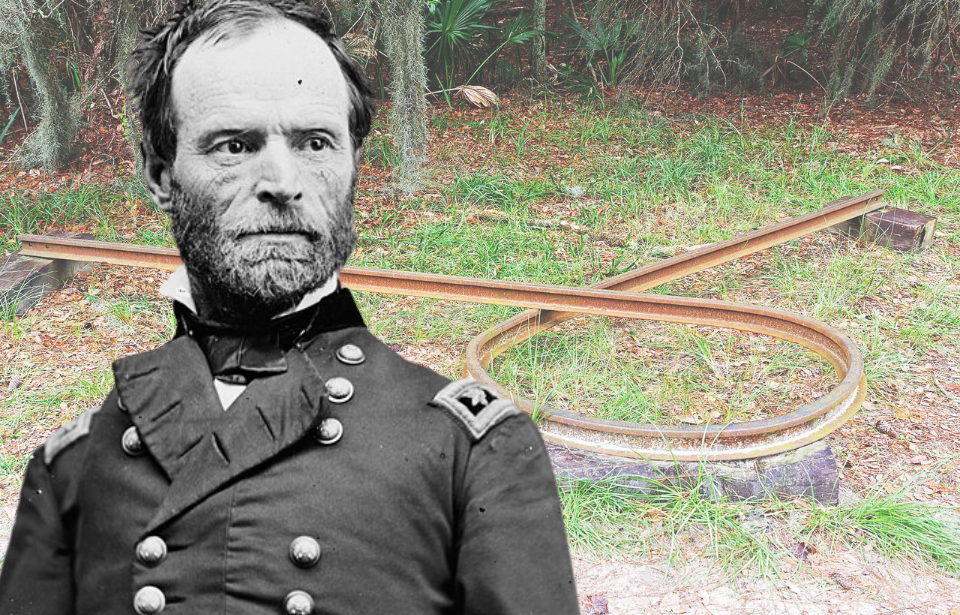Sherman’s Neckties, also known as Sherman’s Bowties, Jeff Davis’s Neckties, and Sherman’s Hairpins, were techniques used by the Union Army during the American Civil War to sabotage railroads. Named after Major General William Tecumseh Sherman, their creator, these methods aimed to undermine the strategic and economic foundations of the Confederacy by targeting its railway infrastructure.
The Union Army needed to slow down the Confederates
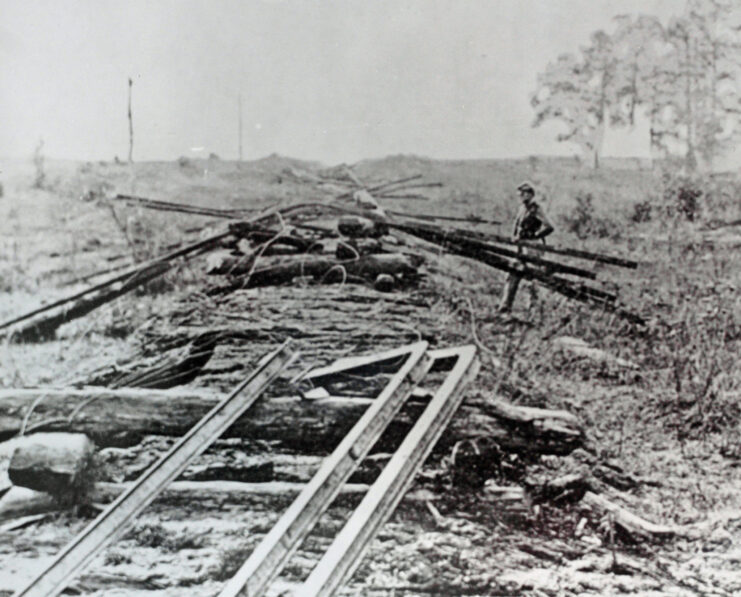
The first way to make Sherman’s Neckties
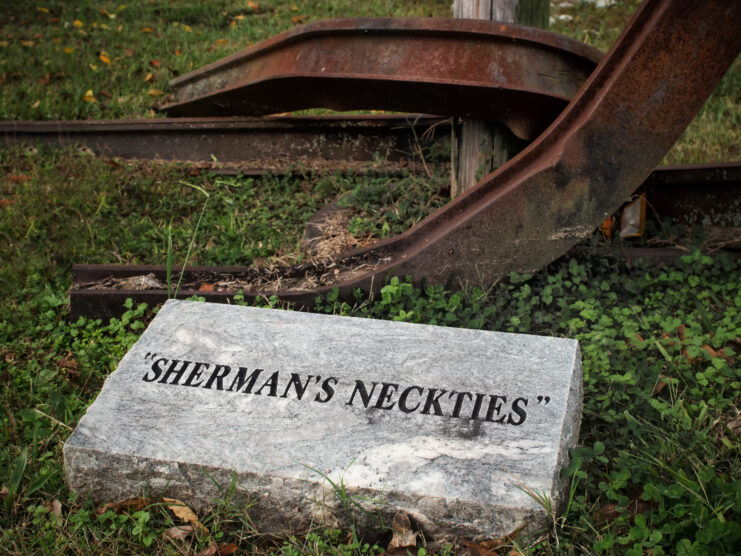
Simply dismantling the railroad tracks did not do enough to disrupt Confederate supply lines. After Union troops dismantled them, they lacked the means and resources to extract the rails, allowing Confederates to easily restore them.
To address this issue, Sherman directed his troops to dismantle the rail tracks by lifting them from the ties and placing them vertically across a bonfire. As the rails heated, their own weight would cause the malleable metal to bend. However, this method was not widely favored as it only partially warped the rails. With concerted effort, Confederate soldiers could straighten the rails and swiftly repair the tracks to their original condition.
The second way to make Sherman’s Neckties
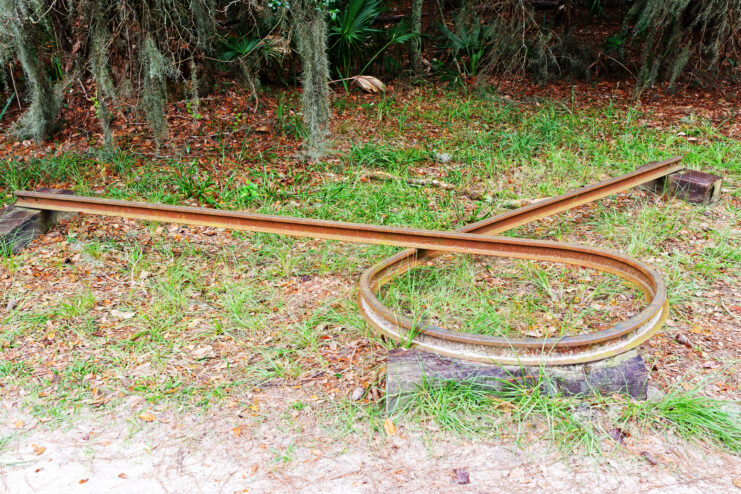
Alternatively, the soldiers on the ground determined a more practical way of twisting the rails, so they were rendered entirely unusable. Still using the heat from a bonfire, they’d take the red-hot rail and twist it around a tree, curving it enough so the ends crossed over one another.
As they remained on the trees, they became known as Sherman’s Neckties. The Confederates didn’t have the foundry space to melt down all of the rails and create new ones, nor did they have the manpower to lay new tracks.
Meridian Campaign of 1864
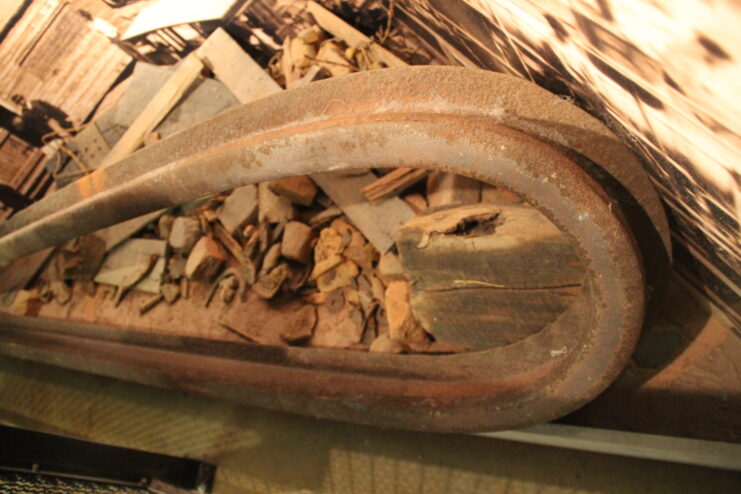
The town of Meridian, located in the eastern part of Mississippi, was a strategic position for the Confederate Army. Three railroads intersected the town, and it served as a storage and distribution center for agricultural products destined for the Southern forces.
Sherman knew this was an important position and wanted to intercept and destroy the enemy’s access to the railroads. If they were successful, the Confederates would be neutralized as the Union forces moved toward the Mississippi River during their March to the Sea Campaign.
On February 3, 1864, Union soldiers began the campaign “to break up the enemy’s railroads at and about Meridian, and to do the enemy as much damage as possible in the month of February, and to be prepared by the 1st of March to assist General [Nathaniel] Banks in a similar dash at the Red River country.”
The Impact of Sherman’s Neckties
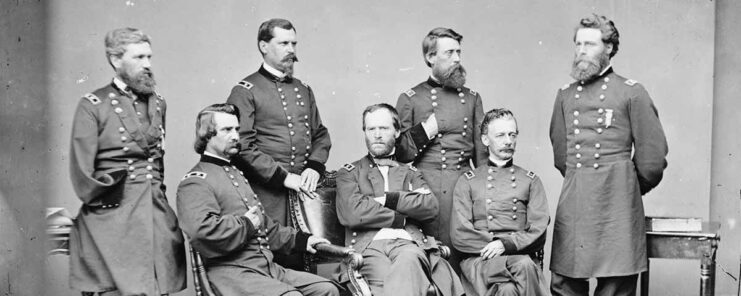
When Sherman’s men arrived in Meridian on February 14, they immediately began prying up the railroad tracks, leaving only Sherman’s Neckties in their wake. They completed their objective and returned to Vicksburg by March 6. It took the Confederates 26 days to restore the rails.
Want War History Online‘s content sent directly to your inbox? Sign up for our newsletter here!
The sabotage put the South’s rail lines out of commission for nearly a month, critically impacting their position in the war and proving that Sherman’s Neckties were an effective tactic.
